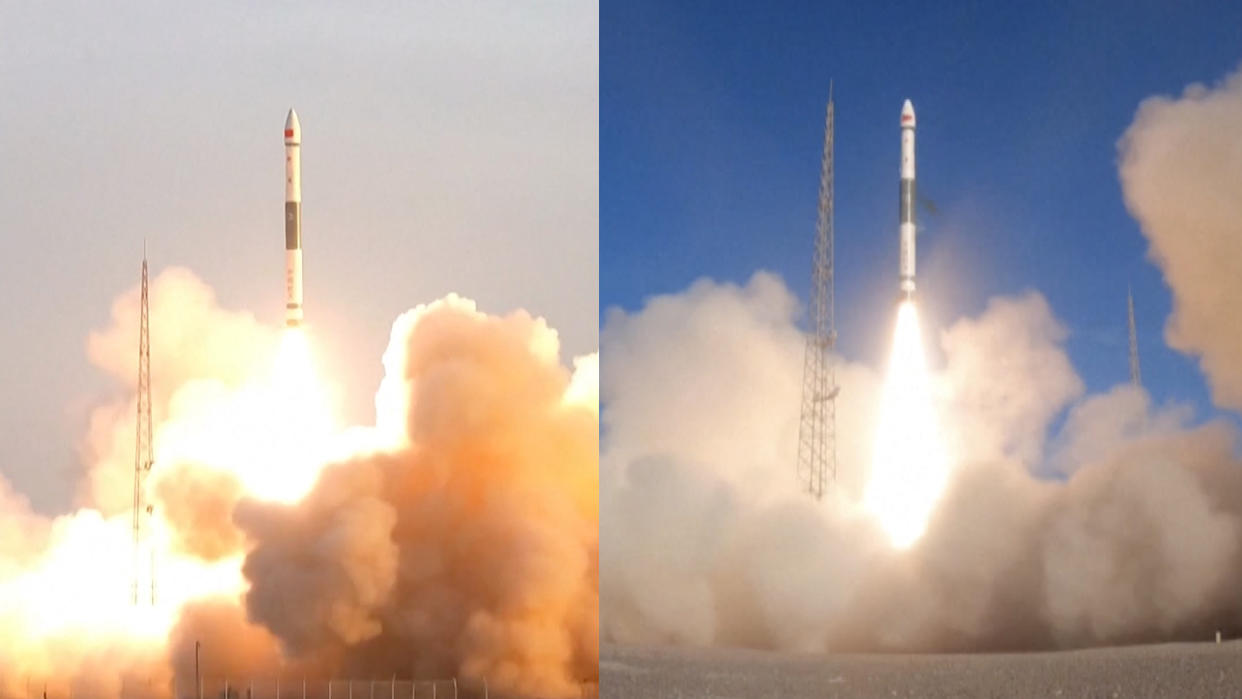China launches 2 sets of commercial weather satellites in 3-day span (video)

Late last month, China launched two clusters of small satellites to provide commercial meteorological data.
Two separate Kuaizhou 1A solid rockets lifted off from transport erector launchers at the Jiuquan Satellite Launch Center in the Gobi Desert at 8:00 p.m. EST on Dec. 24 (0100 GMT and 9:00 a.m. Beijing time on Dec. 25) and 1:50 a.m. EST (0650 GMT, or 2:50 p.m. Beijing time) on Dec. 27.
Aboard each launch were sets of four Tianmu-1 satellites. The satellites were numbered Tianmu-1 (11-14) and (19-22). The spacecraft were developed by a subsidiary of the state-run China Aerospace Science and Industry Corporation, or CASIC.
Related: China launches remote-sensing satellite for Egypt (video)

The new satellites entered near polar orbits with an altitude of around 323 miles (520 kilometers), according to U.S. Space Force space domain awareness data.
Tianmu satellites detect changes to signals transmitted by navigation satellites such as GPS and Beidou as they pass through Earth's atmosphere. The technique is known as GNSS radio occultation.
The constellation is intended to provide global commercial meteorological data services. Available data will be able to assist with numerical weather forecasting, typhoon monitoring and forecasting and climate change research, according to CASIC.
The eight spacecraft join 10 other Tianmu-1 satellites in orbit, which were launched earlier in 2023. The first pair were launched in January last year on a Ceres-1 solid rocket developed by Chinese launch startup Galactic Energy. The rest have flown on Kuaizhou-1A rockets.
RELATED STORIES:
— A Chinese spacecraft has been checking out US satellites high above Earth
— China plans to take 'hack-proof' quantum satellite technology to new heights
— China continues remote-sensing buildup with new launch of Yaogan satellites (video)
The Kuaizhou 1A was developed by CASIC and is operated by Expace, its launch spinoff. The small launcher can carry a payload of 440 pounds (200 kilograms) to a 345-mile-high (700 km) sun-synchronous orbit.
CASIC is a giant state-owned enterprise but, unlike its sister corporation CASC — China's main space contractor for civil and military missions, and the maker of Long March rockets — it mainly launches commercial payloads or satellites for its own projects.
A third Kuaizhou 1A launch is currently set for early Jan. 5. Aboard will be the next quartet of Tianmu-1 satellites, numbered 15-18. CASIC says it aims to complete the constellation in 2025.
That mission will likely be China's first launch of 2024. The country conducted a national record 67 launches in 2023.

